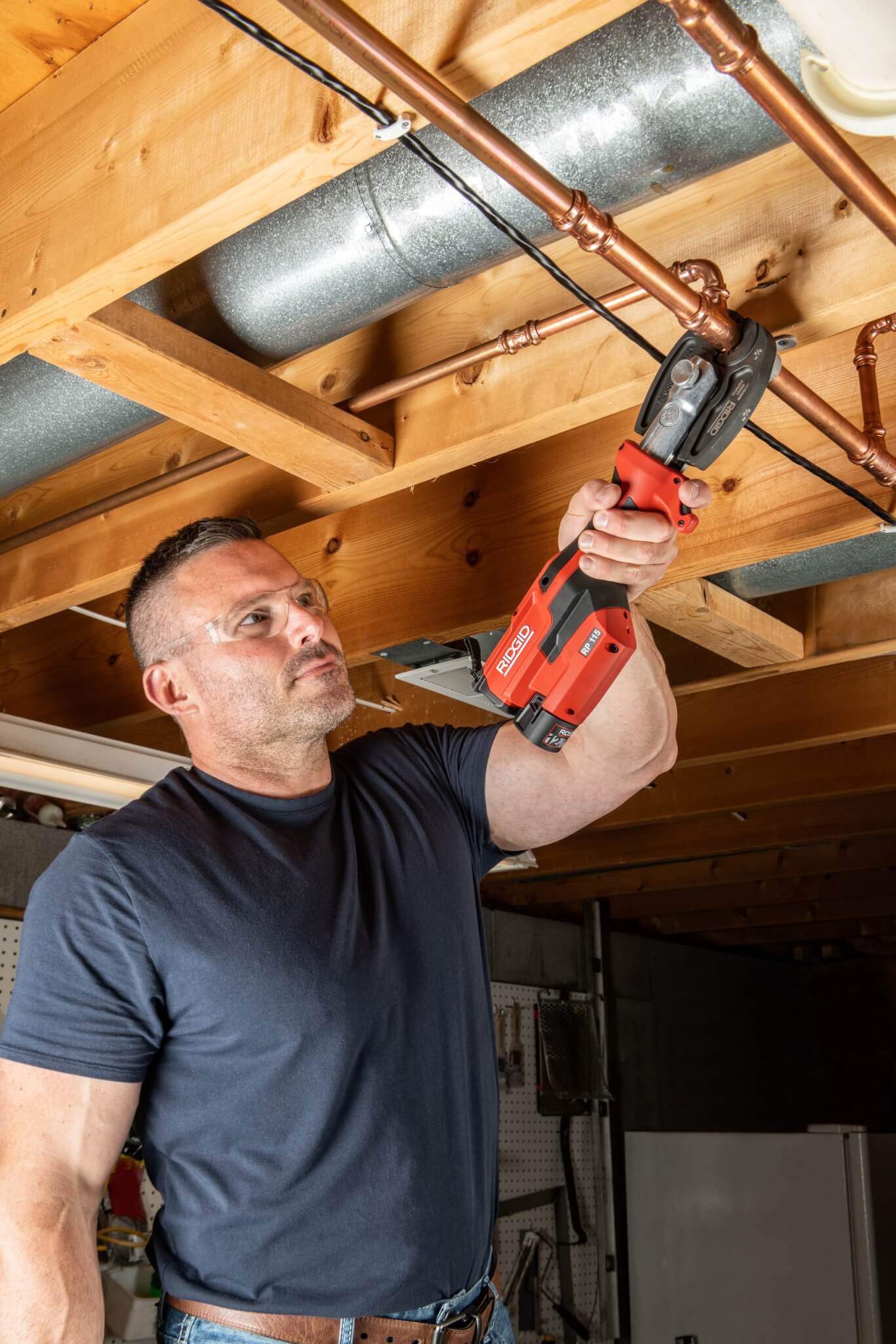
On-the-job safety hazards are a constant risk for mechanical contractors, with some of the most frequently reported injuries coming from routinely used tools and equipment. A few simple precautions can go a long way toward helping maintain health.
Start with the Basics
Ensure protection on the most basic level by investing in quality essential safety equipment, including safety glasses, ear protection, and gloves. Avoid the temptation to skip using them from time to time to get more done. The few minutes it takes to protect yourself can be the difference between remaining healthy and being injured on the job.
Take Care on Stairs and Ladders
Injuries are common on stairs and ladders. When using a ladder, remember to always keep three points of contact—either two feet and one hand or two hands and one foot on the ladder. When a ladder is leaned against a wall, the bottom of the ladder should be one quarter of the ladder’s working length away from the wall, according to the Occupational Health and Safety Administration.
On the stairs, consider using a motorized stair-climbing hand truck to make lighter work of carrying equipment up and down the stairs, and remember to use the handrail. Keep your hands free on both ladders and stairs by carrying tools in a tool belt.
Invest in Ergonomic Tools
Innovative design has resulted in lighter tools with better ergonomics. These upgrades address long-term safety with repetitive tasks, which can determine whether a professional will stay on the job or be sidelined by injury. Repetitive motions over prolonged periods of time can often cause irritation and inflammation of the tendon sheath of the hands and arms, a condition known as carpal tunnel syndrome.
The latest tools now reduce or eliminate the need for repetitive motions, resulting in less strain on the body and decreasing the likelihood of injury. For example, the RIDGID RP 350 Press Tool has an enhanced pistol grip design that shifts the tool weight forward above the hand for all-day comfort and maximum control; the RP 115 is the smallest, lightest hydraulic press tool on the market, allowing you to get in tight spaces with ease.
Minimize Repetitive Tasks
Along with enhanced ergonomics, advances in technology are eliminating some aspects of manual labor. Invest in tools and equipment that let you minimize manual or repetitive tasks. For example, the Greenlee Shear 30T Shearing Station’s retaining spring arm automatically brings dies back into the starting position for the next cut. Its material rest keeps material perpendicular for clean cuts, eliminating the tasks of resetting the die and holding the material during a cut. Small tasks like these, done by hand and repeated over time, can lead to body strain and injury.
Proper Form Is Essential
Even with ergonomic advances in tools, proper form is essential to prevent unnecessary strain on the body. When using a new tool, take the time to learn the proper form. Read the instruction manual, watch how experienced users handle the tool, and look for videos online that share best practices. Understanding proper use and form can also help to save time.
Every job has the potential for injury, but following basic safety guidelines, investing in a few tools to make lighter work of everyday tasks, and using common sense will help keep injury to a minimum and keep professionals healthy and able to stay in their careers longer.
For more information, visit ridgid.com.


